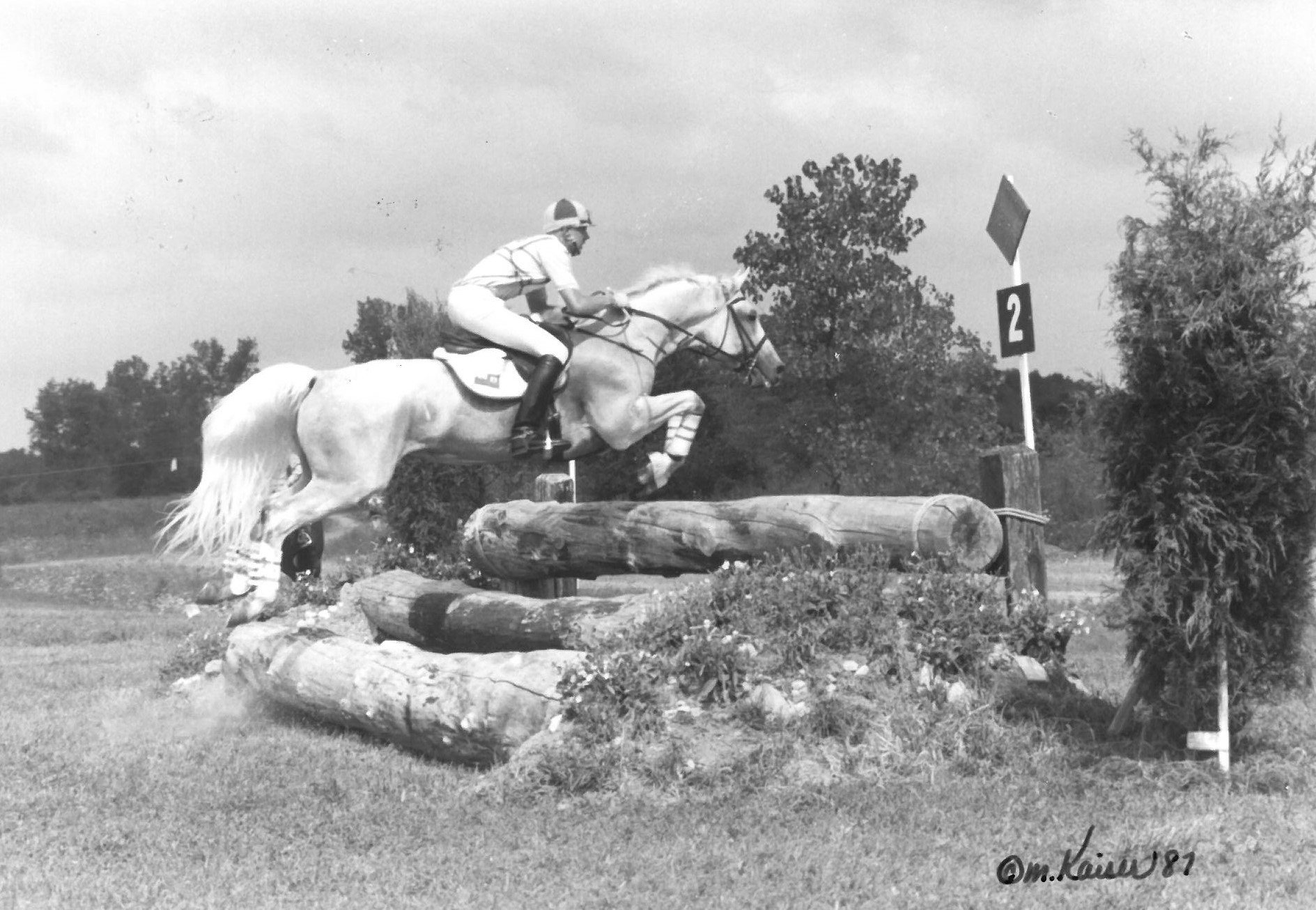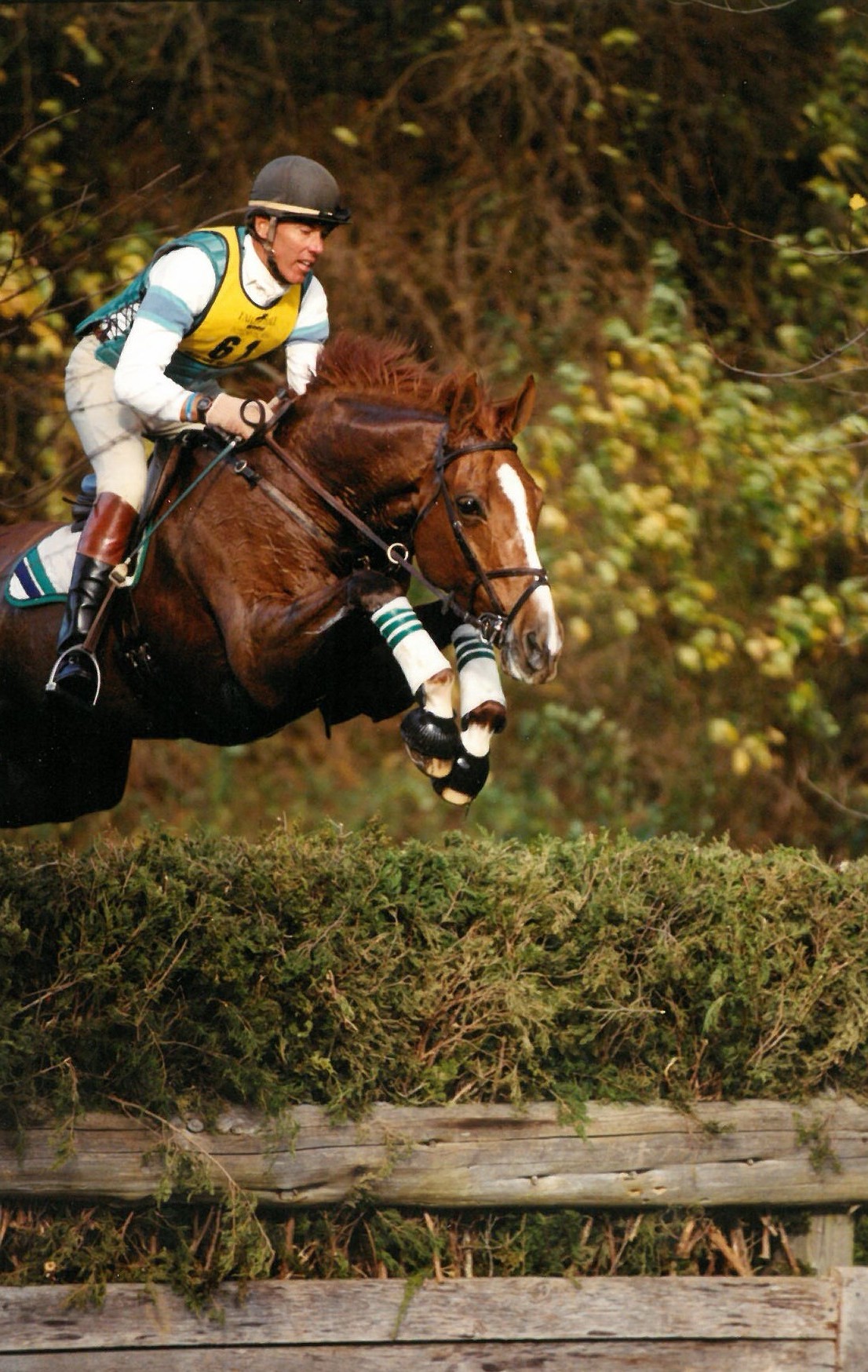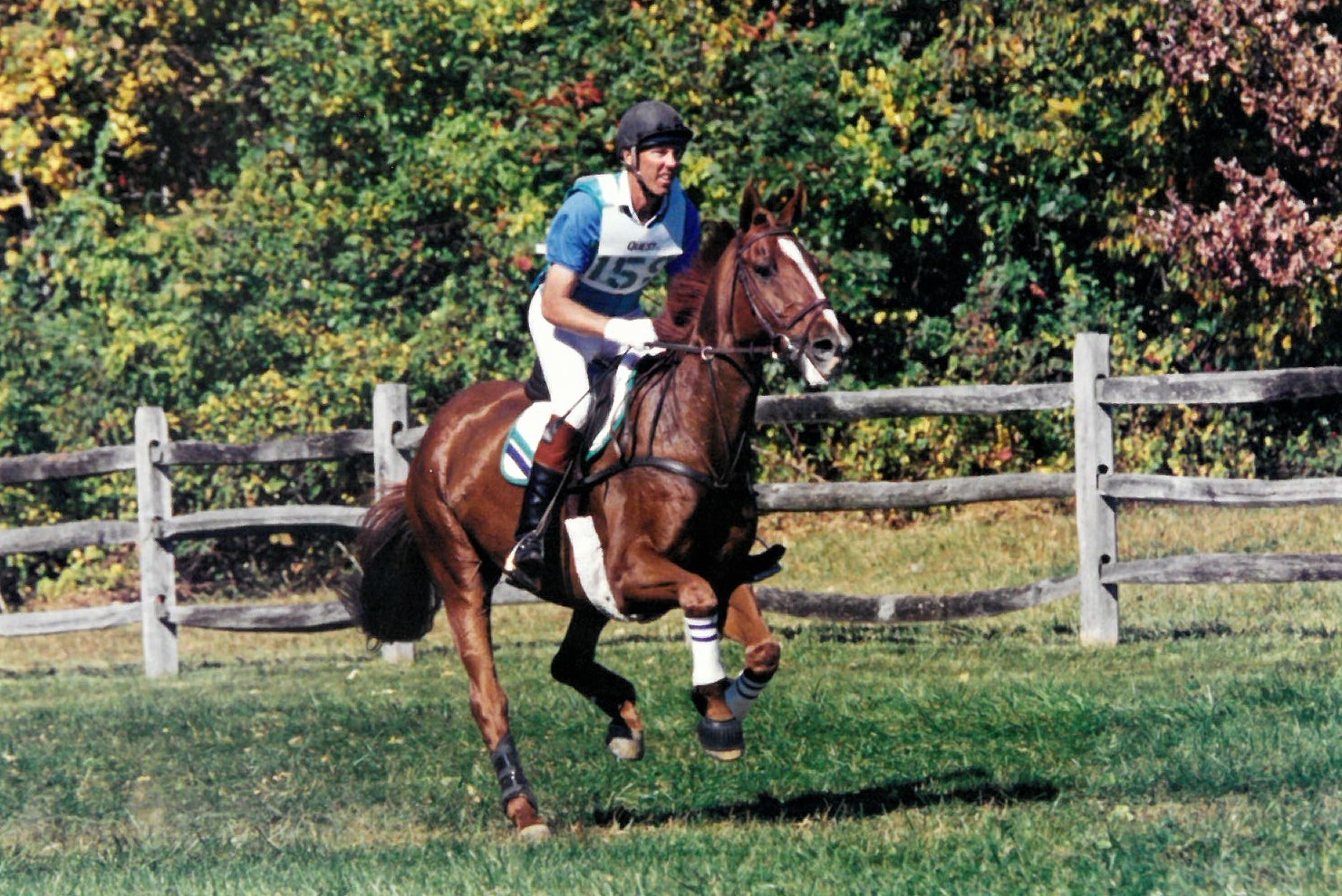Memories from the Vet Box with Peter Gray

Born in Paget, Bermuda, Peter Gray became the first international event rider to represent Bermuda in 1980. He competed all over the world, including three Olympic Games, two World Equestrian Games, a Pan American Games, Badminton, Burghley, and the Kentucky Three-Day Event – all before steeplechase and roads and tracks were removed from the upper levels of the sport. Now a Canadian rider, coach, and world-renowned judge, Gray shared, “I have many fond memories [of the long format] which makes me realize how fortunate I was to have such nice horses.”
Forty years ago, Gray first rode under the Bermudian flag in the 1980 Fontainebleau Alternate Olympic Games with a Standardbred/Thoroughbred cross gelding named Gunnar. Gunnar was first ridden by a student at a local Pony Club and the pair ended up being a reserve for the Canadian Eventing Team prior to Gray purchasing him. “He was my first schoolmaster,” said Gray. “In situations where I was lacking experience he pulled through every time. His dressage was challenging but he always found a way to get between the flags and give me heaps of confidence at the upper levels.”
Gray represented Bermuda again at the 1984 Los Angeles Olympic Games. This time, he brought a new horse - a 15.3 hand Appendix Quarter Horse gelding named Counts Best aka "Charlie" who was “talented in all three phases,” said Gray. In a field of 48 of the best riders in the world, Charlie and Gray sat in 13th after dressage and completed the Olympic level endurance day to sit in 18th going into show jumping. As fate would have it, Gray and Counts Best had to withdraw from the competition before show jumping.
The next Olympic Games was in 1988 in Seoul, South Korea and Gray came back for redemption. He successfully completed the event with a bay gelding named Somers. “[Somers was] my first syndicated horse, he was purchased in the UK and was a cross with a Welsh pony and Thoroughbred. He was naughty and difficult but partnered with me for my first ride around the Burghley Horse Trials. He was tremendously bold on cross-country and a great show jumper,” said Gray.
With three Olympic appearances on three different types of horses, Gray said, “I think these horses are great examples of ordinary horses who made it to top levels in the sport because of very good consistent training, not by me, but my former trainer and mentor to whom I owe much of my knowledge and horsemanship, General Michael Gutowski. [Gutowski] was a former Olympian with the Polish Show Jumping Team. He taught what I refer to as classical European equitation - the forward seat, lots of gymnastics for horse and rider, and above all else to develop confidence with the horse in every aspect of riding. His training philosophy could be encapsulated in one sentence: ‘It is better to upgrade a year too late than a day too early.’”

Shortly after his three consecutive Olympic appearances, Gray bought his next top event horse, an Argentinian horse by the name of Newport. “On the recommendation of Andrew Nicholson, I purchased a horse in Argentina sight unseen. He was the processional ride for the President of that country. Between ceremonial functions, Newport was ridden by members of the cavalry in show jumping and eventing."
“[Newport] took me to the 1990 Stockholm World Equestrian Games, the 1991 Badminton Horse Trials, and many top events in Europe," Gray continued. "At the long format at Badminton, my most remarkable memory was 11 time penalties on steeplechase and four time penalties on the cross-country. He was a big horse and short of blood. I did most of my top-level competitions in Europe and I remember how challenging it was to find decent ground for the roads and tracks, something we do not have to worry about anymore.”
“Another memory was riding the steeplechase phase at Punchestown International Three-Day Event. This phase was over the National Hunt course at the racetrack and the fences were absolutely enormous.” Punchestown racecourse is located in County Kildare, Ireland and is known as the home of Irish Jumps Racing and hosts the annual Punchestown Irish National Hunt Festival. Punchestown is also home to Ireland's well-known International Three-Day Event.

From 1980 to 2006, Gray had many special horses that he competed in the long format but one horse that stands out is the Thoroughbred gelding, Balladeer Ted. “I competed him in my last years of international competition in 2006. He had raced in Ireland as a youngster and was a dream on the steeplechase course! Making time was not difficult on this one,” said Gray. Gray and Balladeer Ted successfully completed the Kentucky Three-Day Event CCI4* (now CCI5*-L) in 2005, the final year the event offered steeplechase and roads and tracks.
While the removal of the long format at the upper levels took place in the early 2000s, the USEA Classic Series was created for competitors to relive the thrill of a full endurance day with steeplechase and roads and tracks at Beginner Novice through Preliminary levels. Referring to the long format in the 1980s and 1990s, Gray explained, “Competing in the long format was almost a different sport. Because of the endurance factor of the long format, the fitness was different and involved long hours of trot sets and a very strict schedule of interval training which was carefully monitored as the competition approached. We emphasized more the scheduling of our fitness work; the priority at present seems to be more the scheduling of - in my opinion - too many competitions . . . During this time of a pandemic and fewer competition opportunities, I believe riders have seen the benefit to staying at home and training!”
“The other thing I liked about the long format was we had a destination CCI three-day in the spring and again one in the fall. The fitness work and preparatory competitions all designed to peak at the three-day, and afterward, horses had a break. I was in favor of the switch to the short format to prolong the longevity of an event horse's career by taking out much of the endurance. I believe speed with tired horses is what leads to injury. Having said that, I now see the disadvantages of a competition season that really doesn’t clearly begin or end and horses are getting too much competition mileage during the year. One point of interest is that we didn’t have warm-up fences before cross-country, the warm-up was on the steeplechase. I loved this because horses were well tuned up and if you had a miss, the brush fences were very forgiving!”

As the sport evolved, so did the event horse. Gray shared, “We have less emphasis on endurance without roads and tracks, there has been a shift to an equine athlete with less Thoroughbred blood to keep up with the higher standards in the dressage and show jumping phases. The importance of the dressage and show jumping is now weighted more heavily in the final scores. This is not to say that the Thoroughbreds cannot still be at the top of the sport, but they have to have good movement and a scopey jump.”
“The dressage in the modern event horse at the five-star level cannot remotely be compared to the standard seen only 10 years ago. Most importantly, the modern CCI-S horse is an athlete whose training has less emphasis on fitness and more on rideability. The modern FEI event horse is simply better trained to meet the challenges of the technical courses requiring horses to come back for jumping scope tests and then go forward for short gallop intervals.”
Want to experience the thrill of the chase much like Peter Gray? Click here to learn more about the USEA Classic Series!
About the USEA Classic Series
The USEA Classic Series keeps the spirit of the classic long format three-day events alive for Beginner Novice through the Preliminary levels. Competitors can experience the rush of endurance day, including roads and tracks, steeplechase, the vet box, and cross-country, as well as participate in formal veterinary inspections and educational activities with experts on the ins and outs of competing in a long format three-day event. Riders who compete in a USEA Classic Series event during the year will have the chance to win a variety of prizes at the events from USEA sponsors.
The USEA would like to thank the Bronze Sponsors: FITS, SmartPak Equine, and Stackhouse & Ellis Saddles and the Contributing Sponsors: Parker Equine Insurance and Bates Saddles for sponsoring the USEA Classic Series.














